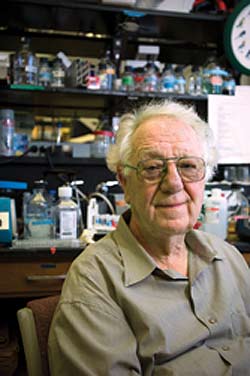- Membership
- Perks and Discounts
- Things To Do
- Resources
- News
- About
- Shop
Related Content
Improv Meets the Boardroom
July 24, 2024
Peek into Greg Hohn’s classroom at Kenan-Flagler Business School on any given day, and more...
Read MoreCarolina Lands Top 10 Finish in Learfield Directors’ Cup
July 11, 2024
A national championship in field hockey, a trip to Omaha for the College World Series...
Read More56 Honored with Distinguished Professorships
June 18, 2024
The University has bestowed distinguished professorships to 56 faculty members since fall 2023. Among the...
Read More-
2024
-
2023
-
2022
-
2021
-
2020
-
2019
-
2018
-
2017
-
2016
-
2015
-
2014
-
2013
-
2012
-
2011
-
2010
-
2009
-
2008
-
2007
-
2006
-
2005
-
2004
- Academics and Athletics
- Admissions
- Alumni Profiles
- Alumni Recognition
- Around Town
- Arts
- Books
- Campus Profile
- Campus Safety
- Carolina Alumni Awards
- Carolina Alumni Leadership
- Carolina Alumni Programs and Outreach
- Carolina Alumni Reunions
- Carolina Alumni Review
- Celebrations
- Championships
- College and Costs
- Commencement
- Coronavirus
- Discovery
- Extracurricular
- Faculty
- Faculty Awards
- For the People
- Go Heels
- Greek Life
- Hark the Sounds
- Higher Education
- Homecoming
- In Class
- In Memoriam
- Innovation and Technology
- Issues
- Object Lesson
- On View
- Our Treescape
- Philanthropy
- Podcast
- Public Service
- Race and Reckoning
- Research
- Sexual Assault
- Silent Sam
- Sports
- Structures
- Student Achievement
- Students
- Timelines
- Tuition and Financial Aid
- UNC Libraries
- UNC’s History
- Undergraduate Spotlight
- University Achievements
- University Awards
- University Budget Issues
- University Development
- University Leadership
- University News
- University Rankings
- What We Do
- Who We Are
- Young Alumni
- Yours at Carolina
Carolina's First Nobel
Posted on Oct. 8, 2007The quiet talk in the halls of UNC’s genetics labs that’s been going on for years turned out to be accurate. Oliver Smithies, who has labored at the tedious task of genetics research for more than 50 years, was honored Oct. 8 with the 2007 Nobel Prize in medicine — the first Nobel for a Carolina faculty member.

Oliver Smithies (Photo by Tony Pearce)
Smithies will receive his Nobel Prize in a ceremony Monday, Dec. 10, in Stockholm, Sweden. A webcast of the ceremony can be watched here. (Windows Media Player is needed to view the webcast.) Also, Smithies delivered his Nobel lecture on Dec. 7, and a video of his presentation along with slides are available online.
The Nobel Prize award ceremony takes place at the Stockholm Concert Hall, Sweden, on Dec. 10 every year, the anniversary of Alfred Nobel’s death. At the ceremony, the Nobel Prize in physics, chemistry, physiology or medicine, literature and the prize in economics are awarded to the Nobel laureates.
Smithies, who is Excellence Professor of pathology and laboratory medicine in the School of Medicine, shares the prize with Mario R. Capecchi of the University of Utah’s Howard Hughes Medical Institute and Sir Martin J. Evans of the United Kingdom.
Specifically, the Nobel is for their work in creating animal models of human disease. It marks one of the seminal accomplishments in genetics research, a process known as gene targeting, which has been credited to Smithies. The three have been honored together previously.
The achievement marks the pinnacle of a scientific career for Smithies, a UNC faculty member for 19 years, containing numerous honors and two major innovations that have fundamentally changed the science of genetic medicine and laid the foundation for today’s research into gene therapy.
Continued… This report continues in the member-exclusive area of the GAA’s Web site and also is featured in the November/December 2007 issue of the Carolina Alumni Review.
Not a member? Join the GAA today to take advantage of this member exclusive.
Related coverage is available online:
-
A Humble Scientist Gets the Proverbial Phone Call
News report from October 2007, available online to Carolina Alumni members. - Of Mice and Man: The human genome is complete. Now medical schools will subdivide the vast field of genetics research. Carolina is making a major investment to strengthen its specialty in genetic engineering.
Cover story from the November/December 2000 issue of the Carolina Alumni Review, available online to Carolina Alumni members. -
Accompanying profile, detailing Smithies’ work, also in the November/December 2000 issue of the Carolina Alumni Review.
© 2024 Carolina Alumni
